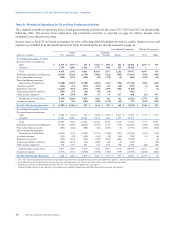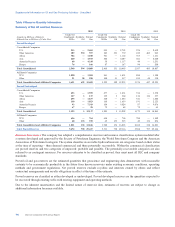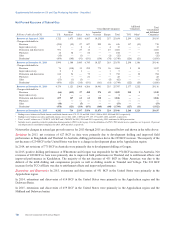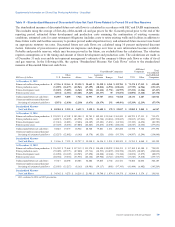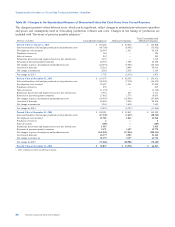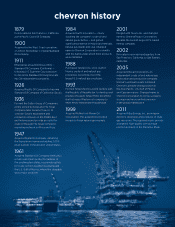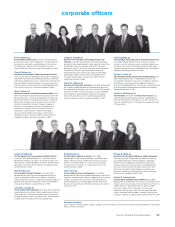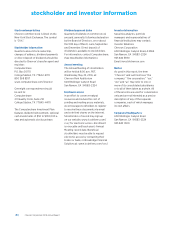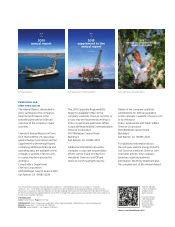Chevron 2015 Annual Report Download - page 83
Download and view the complete annual report
Please find page 83 of the 2015 Chevron annual report below. You can navigate through the pages in the report by either clicking on the pages listed below, or by using the keyword search tool below to find specific information within the annual report.
chevron history
1879
Incorporated in San Francisco, California,
as the Pacific Coast Oil Company.
1900
Acquired by the West Coast operations
of John D. Rockefeller’s original Standard
Oil Company.
1911
Emerged as an autonomous entity —
Standard Oil Company (California) —
following U.S. Supreme Court decision
to divide the Standard Oil conglomerate
into 34 independent companies.
1926
Acquired Pacific Oil Company to become
Standard Oil Company of California (Socal).
1936
Formed the Caltex Group of Companies,
jointly owned by Socal and The Texas
Company (later became Texaco), to
combine Socal’s exploration and
production interests in the Middle East
and Indonesia and provide an outlet for
crude oil through The Texas Company’s
marketing network in Africa and Asia.
1947
Acquired Signal Oil Company, obtaining
the Signal brand name and adding 2,000
retail stations in the western United States.
1961
Acquired Standard Oil Company (Kentucky),
a major petroleum products marketer in
five southeastern states, to provide outlets
for crude oil from southern Louisiana and
the U.S. Gulf of Mexico, where the company
was a major producer.
1984
Acquired Gulf Corporation — nearly
doubling the company’s crude oil and
natural gas activities — and gained
significant presence in industrial chemicals,
natural gas liquids and coal. Changed
name to Chevron Corporation to identify
with the name under which most products
were marketed.
1988
Purchased Tenneco Inc.’s U.S. Gulf of
Mexico crude oil and natural gas
properties, becoming one of the
largest U.S. natural gas producers.
1993
Formed Tengizchevroil, a joint venture with
the Republic of Kazakhstan, to develop and
produce the giant Tengiz Field, becoming
the first major Western oil company to
enter newly independent Kazakhstan.
1999
Acquired Rutherford-Moran Oil
Corporation. This acquisition provided
inroads to Asian natural gas markets.
2001
Merged with Texaco Inc. and changed
name to ChevronTexaco Corporation.
Became the second-largest U.S.-based
energy company.
2002
Relocated corporate headquarters from
San Francisco, California, to San Ramon,
California.
2005
Acquired Unocal Corporation, an
independent crude oil and natural gas
exploration and production company.
Unocal’s upstream assets bolstered
Chevron’s already-strong position in
the Asia-Pacific, U.S. Gulf of Mexico
and Caspian regions. Changed name to
Chevron Corporation to convey a clearer,
stronger and more unified presence
in the global marketplace.
2011
Acquired Atlas Energy, Inc., an indepen-
dent U.S. developer and producer of shale
gas resources. The acquired assets provide
a targeted, high-quality core acreage
position primarily in the Marcellus Shale.



